Some of Cassini’s Most Fabulous Saturn Pics!
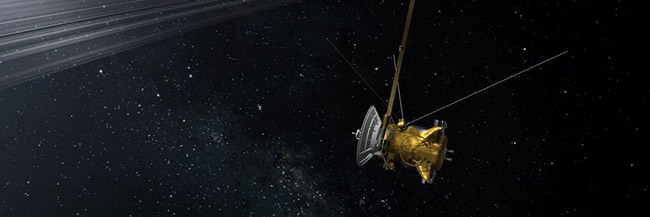
Cassini Spacecraft has been a topic of wonder and delight since it was launched in 1997 with one mission encoded in its system; to reach and study Saturn. As of July 1st, 2004, Cassini has been orbiting the ringed-planet and sending back stunning images we here on Earth may never have gotten the privilege of seeing without NASA’s marvel of technology. Read on to explore just some of the most fabulous (and mind-blowing) pics that Cassini was able to capture on her decade journey around Saturn.
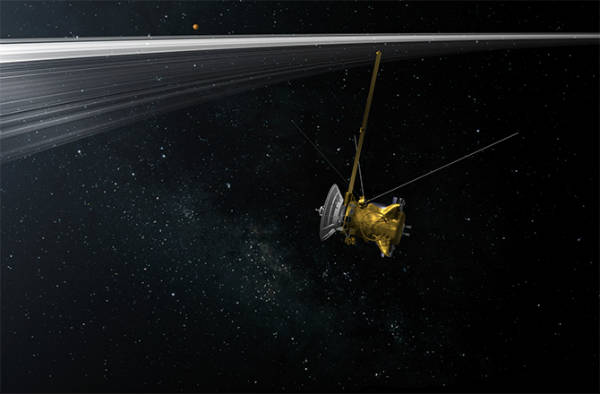
Photo Credit: NASA
NASA/JPL-CALTECH/SPACE SCIENCE INSTITUTEBefore we get to the amazing photos Cassini was able to capture, let’s first discover some quick facts about this spacecraft.
- It is a flagship-class NASA–ESA–ASI robotic spacecraft.
- Cassini is the fourth space probe to visit Saturn and the first to enter its orbit
- This spacecraft measures in at 22 feet (6.7 meters) high and 13.1 feet (4 meters) wide.
- It weighs 12, 593 pounds (5,712 kilograms) with fuel, Huygens probe, adapter, etc; 4,685 pounds (2,125 kilograms) unfueled orbiter alone
- More than 5,000 people worked on Cassini
Saturn’s Hexagon
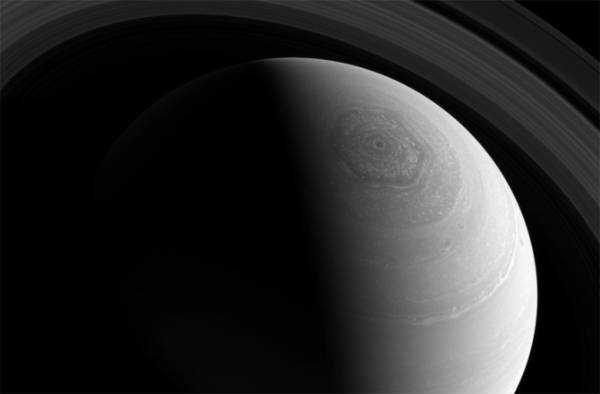
The Voyager probe first discovered this mysterious hexagon-shape etched into Saturn’s upper atmosphere in its north pole in the early 1980’s. It is thought to be caused by high-altitude jet streams and to also rotate with the ringed planet’s inner core and its global magnetic field.
Beautiful, yet so puzzling…
Saturn’s Largest Moon Titan
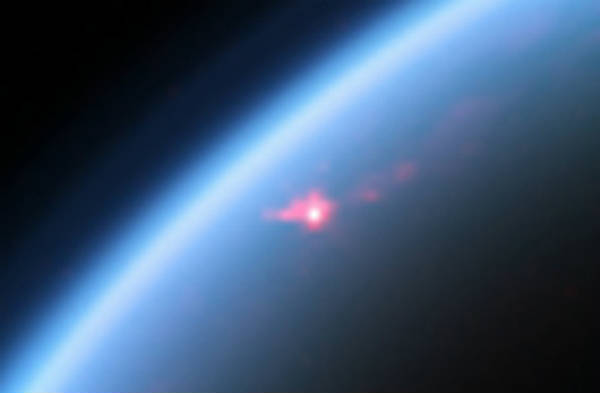
NASA / JPL-Caltech / University of Arizona / University of Idaho, Public domain, via Wikimedia Commons
Photo Credit: NASATitan is Saturn’s largest moon and one that holds the most promise of being the most Earth-like. Check out these other fun facts about Titan:
- Titan is almost has large as Mars, measuring in at 3,200 miles (5,150 kilometers) in diameter, which is also about half the size of Earth.
- This moon is known to have a thick atmosphere with surface temperature of minus 290 Fahrenheit (minus 179 degrees Celsius) — this makes water as hard as rocks and allows methane to be found in its liquid form.
- Ethane and hydrocarbon-rich landscapes filled with rivers and valleys, and vast dune fields are also on Titan.
- Astrobiologists are anxious to follow up on Titan after seeing the European Huygens lander (which hitched a ride to Saturn on board Cassini) float down and land on the moon in 2005.
Close Up of Titan’s Terrain
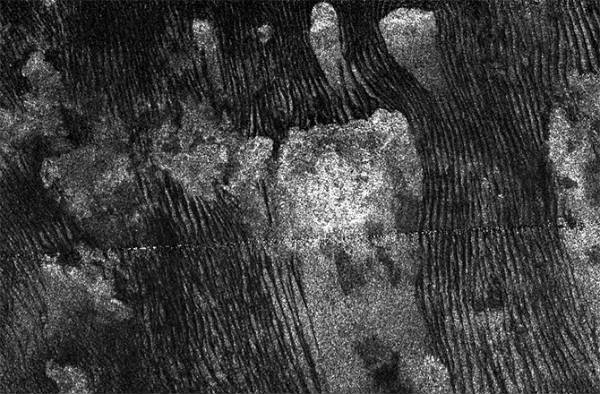
Photo Credit: NASA
Photo Credit: NASAThe speculation is over as Cassini sends back shots of Titan’s diverse terrain. This image shows, from the spacecrafts many flybys, even more Earth-like features on Titan, including wind-blown features. According to NASA;
“In the case of Titan’s black dunes, small grains of organic compounds have been blown into rippled ‘seas’ of their own.”
Moons Mimas and Pandora Loom Together

Photo Credit: NASA
Photo Credit: NASAIn this outstanding picture, we can see Saturn’s larger moon, Mimas looming in the background with the smaller moon Pandora passing behind (or in front of by our view). Here are some amazing facts about both Mimas and Pandora:
- Mimas is also nicknamed the “Death Star Moon” in reference to Star Wars; the moon’s large Herschel Crater resembles the Death Star’s planet-killing super-weapon.
- Mimas’s averages a distance from Saturn of about 125,000 miles (201,000 kilometers). In comparison, our moon averages about 239,000 miles (384,000 kilometers) from Earth.
- This moon is only about 250 miles (402 kilometers) in diameter.
- It is one of the most crater-pocked objects in our Solar System
- The biggest crater on Mimas is the Herschel Crater. It takes up about 81 miles (130 kilometers) and its outer walls are more than 3 miles (4.8 kilometers) high!
- Scientists believe this moon is made up of mostly ice.
Pandora is also fascinating:
- Pandora is not round, but rather more “potato-shaped.”
- It measures 68 x 52 x 39 miles (110 by 84 by 62 kilometers) in size.
- It orbits Saturn at a distance of 88,048 miles (141,700 kilometers) from the planet’s center.
- It received its name from Greek mythology.
Enceladus Surface Exposed!
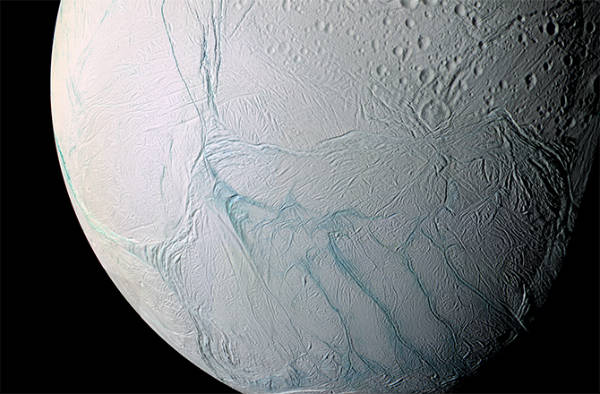
NASA/JPL/Space Science Institute, Public domain, via Wikimedia Commons
Photo Credit: NASAAppearing like a giant cosmic snail slithered across its surface, leaving a trail of snail goo behind, the moon called Enceladus is Saturn’s second largest moon. It features water-rich geysers (that also have hints of life-giving chemistry) and it may also have extensive sub-surface seas of liquid water. Scientists are very anxious to discover more about this moon and what lies beneath both moons’ cracked crust
The Birth of a Baby Moon?

NASA/JPL-Caltech/Space Science Institute, Public domain, via Wikimedia Commons
Photo Credit: NASACassini not only took some amazing shots, but could it have actually captured the image of a baby moon being created? Scientists believe that little nodule peaking out from Saturn’s A ring could very well be a new moon in the making. This proves that even though the Solar System is old, planets are still active in the moon-formation processes.
Earth Is Just a Speck
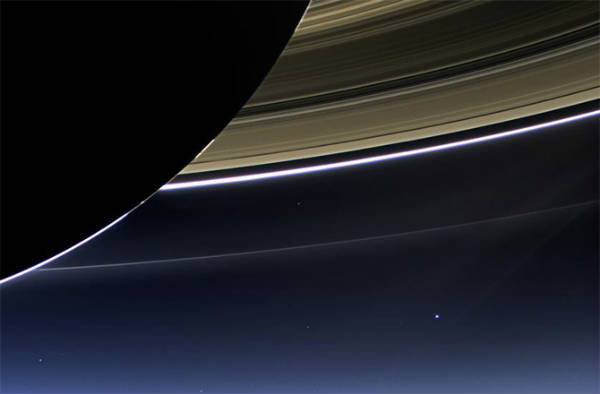
NASA/JPL-Caltech/Space Science Institute, Public domain, via Wikimedia Commons
Photo Credit: NASAEven though we here on Earth may feel like we are the end-all-be-all of the Universe, this picture shows us here as just a speck in the cosmic-cake. Taken from almost 900 million miles-away (14, 480 million kilometers) Earth is a mere dot in the mid-bottom right of this soon-to-be iconic picture. Kinda makes one feel tiny, doesn’t it?
As of today NASA’s Cassini mission is drawing to an end as it enters its final “showdown” with Saturn with hopes of tackling daring “proximal orbits” through the ring plane in 2016. This final phase is called the “Cassini Grand Finale” and is sure to be outstanding. Stay tuned for more to-be-amazing pictures from that final round…
